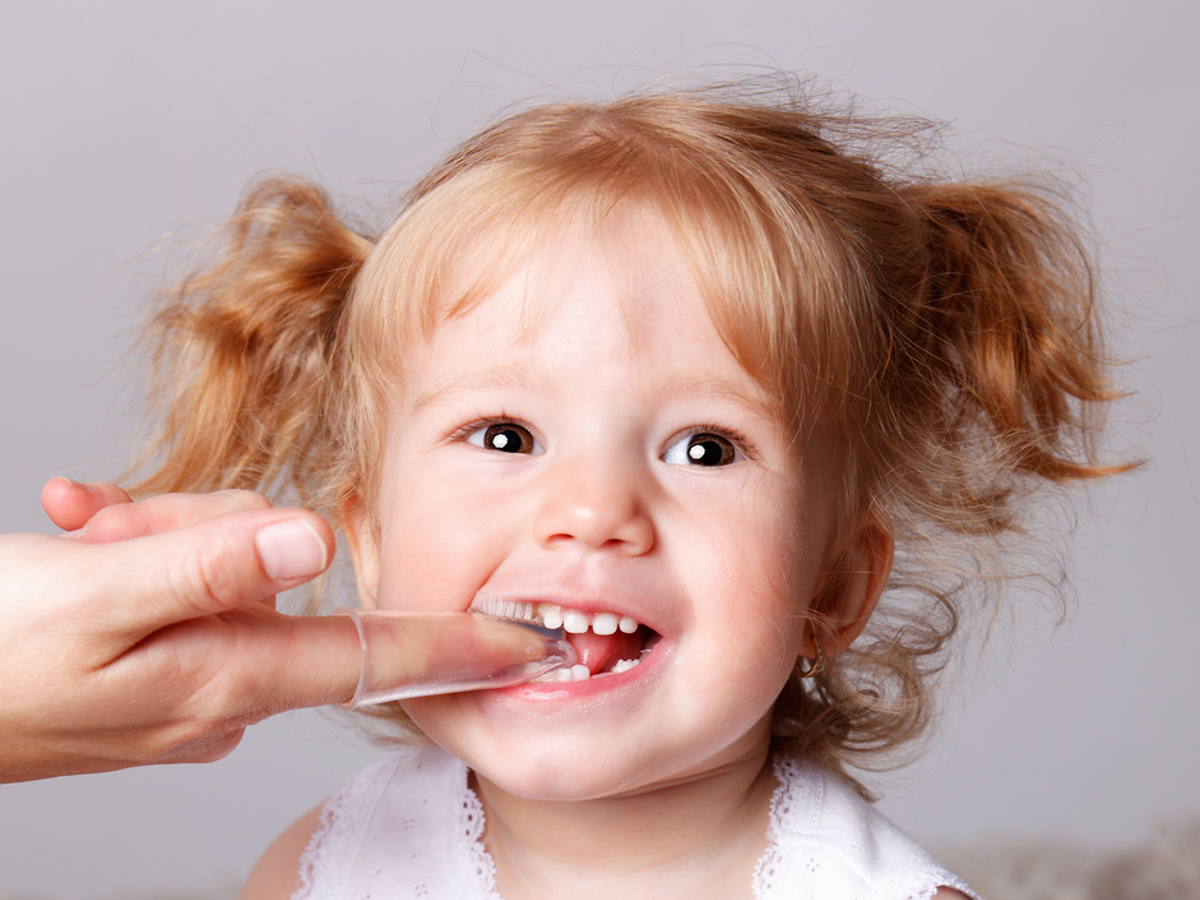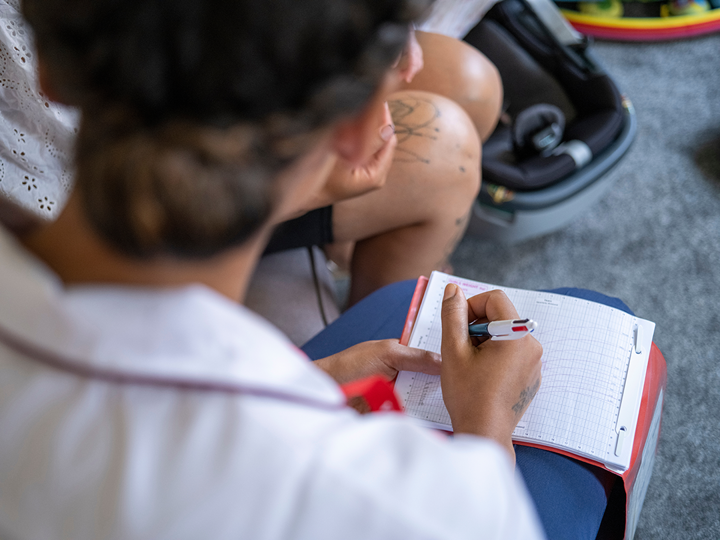Dental health strategies for sensitive children
- 1-5 Years
- 5-11 Years
- 11-19 Years
- SEND
- Behaviour, emotions and mental health
- Child development and growing up
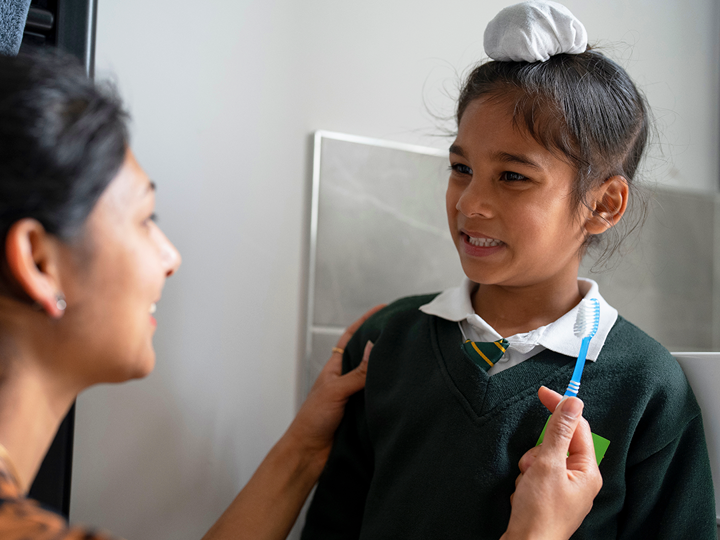
Brushing teeth can be a uncomfortable or overwhelming task for sensitive children and young people. as a result, they may try to avoid feeling uncomfortable or overwhelmed by not brushing their teeth at all.
It's very important for your child or young person's dental health that they brush their teeth twice a day. It can be helpful to change and adapt parts of the routine of brushing their teeth to meet their sensory needs such as changing their toothpaste, toothbrush or technique.
Explore the topics on this page:
Introducing a new strategy
Each child and young person is unique. When considering strategies, make sure to keep your child or young person in mind. This is a trial and error process. So, when one strategies doesn't work, there may be another strategy to try instead.
When trying a new strategy, give yourself and your child or young person the best chance to succeed. Try to start a new strategy at the end of the day, a weekend or during a school break. This reduces the pressure to get the task or activity done in a short timeframe.
It is important that when you trial a new strategy you:
- Communicate with your child. You can use communication aids like social stories, picture symbols, visual schedules and sequence strips.
- Stay consistent. By sticking to a routine, your child can learn what is going to happen next. This helps reduce the stress around self-care activities.
- Keep the surroundings organised. Try to make sure things are put back in their place. This helps teach your child that this is where the item belongs. They will then be able to find the item by themselves and be more independent.
- Reward your child. Using rewards can encourage your child to feel better about the new strategy. You can use a reward chart where you add a sticker for every independent attempt.
Toothpaste
Some children who are sensitive to taste and texture can find brushing their teeth difficult due to the taste or texture of their toothpaste. lt can be uncomfortable, overwhelming or make them feel 'icky' or 'gross'.
There are lots of different types of toothpaste you can try such as:
- flavoured toothpaste such as mint, strawberry or flavourless
- mild or less flavourful toothpaste
- foamless or sodium lauryl sulphate (SLS) free toothpaste
- low grit or non-abrasive toothpaste
Make sure you use a toothpaste that contains the right amount of fluoride for your child's age.
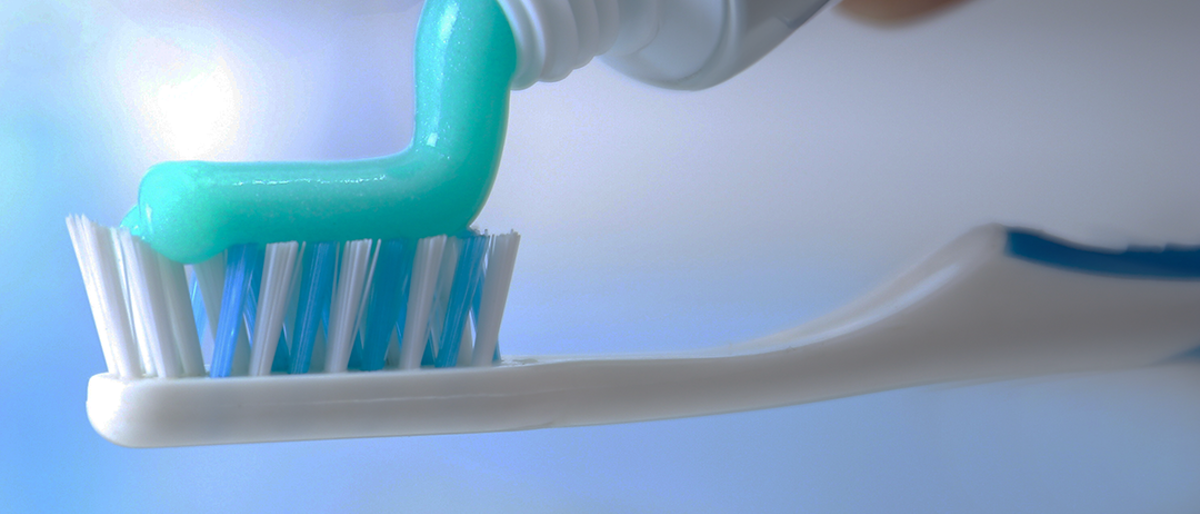
Toothbrush alternatives
When considering toothbrushes for your child or young person, please ensure you buy from a reputable brand.
Techniques for brushing teeth
There are some techniques that can help your sensitive child to brush their teeth. Please note, these are adapted techniques, ideally teeth and gums should be gently brushed in a circular brushing motion for 2 minutes.
Practice the action of brushing teeth. You can do this by using an old toothbrush to paint the outside of a potato. This will help your child see what they are going and understand the movement they are making. This can also help encourage them to brush their teeth for longer.
Let your child choose whether they stand up or sit down to brush their teeth. This can be particularly helpful if your child has difficulties with their balance.
Encourage your child to use a mirror when brushing their teeth. This can help them to see what they are doing as they brush their teeth.
Count the number of strokes (1 circular motion) when brushing their teeth. Identify different parts of the mouth such as top back left. Your child can then brush the top back left 15 times. You can use a picture of an open mouth to help them follow where to brush their teeth.
Encourage your child to apply more pressure to their teeth and gums when brushing their teeth. This can help reduce how sensitive brushing their teeth feels for your child.
Use a timing device to encourage 2 minutes of brushing. This doesn't have to be a egg-timer or alarm. You can use a song or YouTube video that is 2 minutes long to listen to or watch as they brush their teeth.
Have you tried looking at our general advice?
You may want to look at our general dental health page for more information.
Changing the surroundings to meet your child's needs
Bathrooms can be particularly difficult for children and young people who are sensitive to light and sound. Bathrooms usually have overhead lighting which some light sensitive children and young people can find upsetting. They are also usually a small room with lots of hard surfaces like tiled walls and floor. This can change the how things sound (the acoustics of the room).
If your child finds the bathroom overwhelming, encourage them to brush their teeth in a different room. Some children can find the lights and sounds in a bathroom overwhelming so allowing them to brush their teeth in their bedroom may help.
If your child can tolerate the bathroom but find other paths of the toothbrushing routine difficult, there are some small ways you can change the environment to meet your child's sensory needs:
Use a toothpaste pump dispenser. This can help children who struggle with getting the toothpaste out of the tube.
Use a footstool. This will help your child reach the sink basin and see themselves in the mirror.
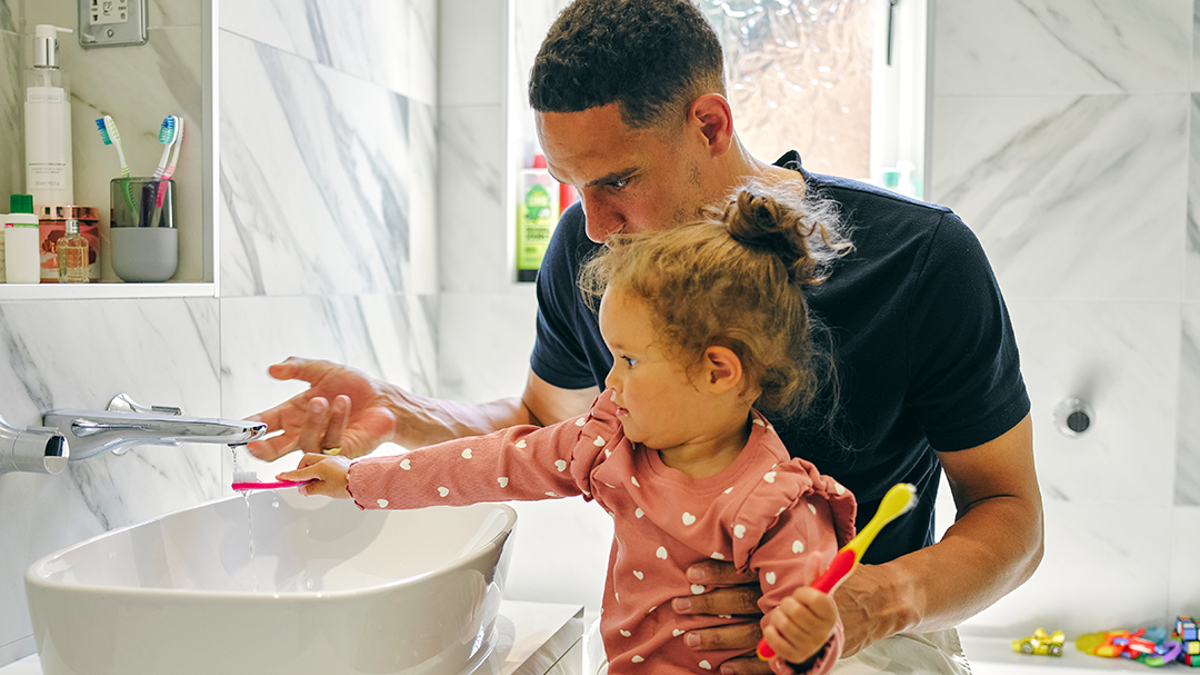
Last reviewed: 1 November, 2024

